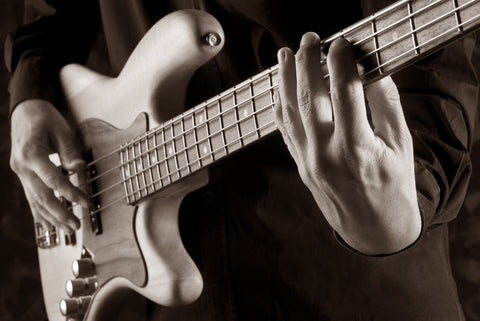-
Audio
-
Guitar
-
Bass
-
Blog
-
SALE
- Financing
- Support
- SINCE 1946
May 24, 2016

If you aren’t getting the bass sound you want, you may immediately consider investing in some new pedals, a new bass, or even a new amp. But before you do that, spend some time adjusting your equalization. Understanding how each of your amp’s equalization controls affects your bass tone can help you achieve a sound that sits perfectly in any stage or studio (and it’s free)!
Your amp’s equalization (EQ) controls allow you to boost or cut the volume of certain frequencies. Since every venue, room, and band is different, you’ll likely find that your EQ settings will constantly need to be adjusted. For instance, some smaller rooms may be boomy, so you’ll have to turn down the bass control. If you’re playing outdoors, there are no walls for the bass to reflect off of, so you’ll probably have to give your bass EQ a little boost. EQ lets you account for any deficiencies in room acoustics.
Here is a rundown of common EQ frequencies and what they sound like, using a Carvin Audio B1000 bass amplifier as a guide.
The EQ knobs on this amplifier are labelled Sub Bass, Bass, Low Mid, Mid, Hi Mid, and Treble. These knobs are centered at 40Hz, 100Hz, 400Hz, 800Hz, 2kHz, and 6kHz, respectively. While it’s not critical to know exactly what these frequencies are, it is extremely helpful to know how they affect the tonal characteristics of your bass.
40 Hz - This is the bottom end of your bass. It is more felt than heard and affects the low, low end of your bass. For reference, the E string on your bass guitar is 41Hz.
100Hz - This is the fatness or girth of your bass. Cutting here can help your bass be less boomy, while still keeping the bottom end power.
400Hz - A lot of your bass’s body, warmth and fullness lies in this range. Cutting too much here can make your bass sound thin, while boosting too much will make it sound woofy or muddy.
800Hz - This is where your bass “growls.” Your pick or finger attack is accentuated if you boost here, and your bass will cut through with added midrange.
2kHz - If you’re a bassist who wants an edgy tone, this frequency will do it. It adds clank and definition.
6kHz- This frequency really accentuates clarity and crispness, really bringing out fingerboard noise and the nuances of your playing.
It is important to note that boosting EQ affects the overall gain structure of your amplifier, so you likely will have to adjust the drive and/or master volume with any EQ changes. A good way to start is to set all your EQ knobs to the 12 o’clock position, and then reduce the EQ of any frequencies you don’t want. Applying proper equalization to your bass is something that you will master over time and with experience, so don’t be afraid to turn some knobs and find your tone!
October 02, 2025
Discover the features and performance that the WG6 Wireless Guitar/Bass System has to offer. The WG6 Wireless Guitar/Bass System is designed to give you the wireless freedom you have been looking for and the simplicity to make your life as a working musician easier. Advanced wireless technology, multiple channel capability, premium audio processors make the WG6 the leader in compact wireless instrument systems. Defined and detailed low frequency response makes this system especially useful for bass players. The WG6 works with both active and passive instruments and is perfect for both electric and acoustic guitar/bass.
March 28, 2025
At any time at any gig, something is bound to go wrong and you may need a tool to get you back up and running. Here are a few basic tools you should bring to every gig.
January 09, 2025
I once asked blues legend Walter Trout why he still plays his well-worn vintage Strat. The technology exists to digitally scan the guitar and make very accurate replicas. His response was he could leave it at home, but then it will never be played. Plus, someone could steal it from his home. At least the guitar is with him and he has the pleasure of playing it. But this may not be the same for everyone.
Sign up to get the latest on sales, new releases and more…
NoFraud Frequently Asked Questions
"Make a joyful noise unto the Lord all of the earth; make a loud noise and rejoice and sing praises. Sing to the Lord with the harp and the voice of the psalm." - Psalm 98:4-5
© 2026 Carvin Audio.
Carvin Corp.
POS and Ecommerce by Shopify
